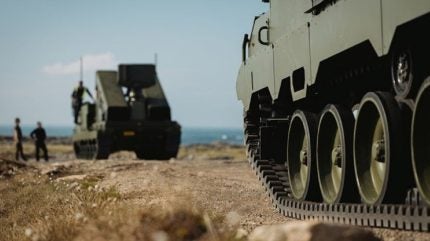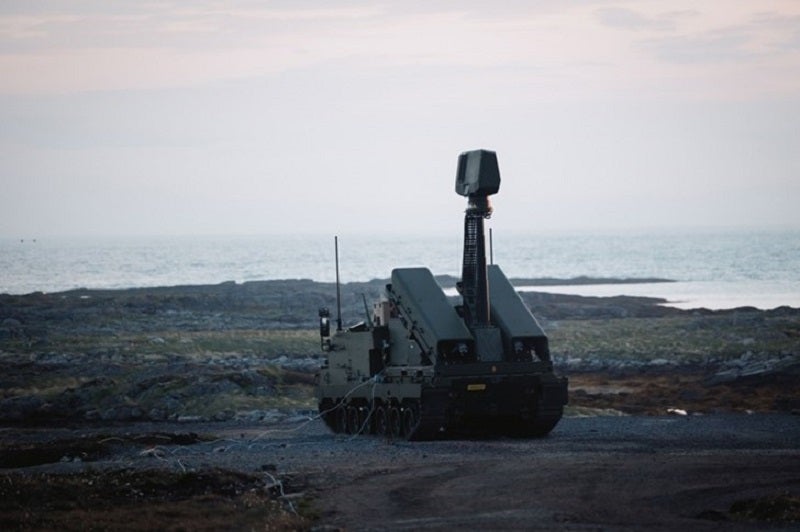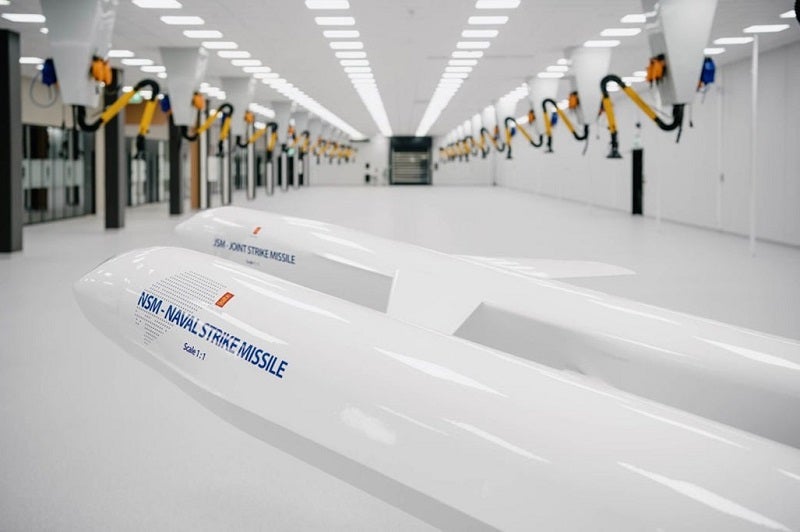
In one fell swoop Norway’s leading weapons specialist launched a new missile defence system (MDS) designed to protect organic level units, an update that was followed closely by the opening of a new missile manufacturing plant in mid June 2024.
Kongsberg has doubled down on its missile defence portfolio across land, sea and air with its growing production of the Naval Strike Missile (NSM), air-launched Joint Strike Missile (JSM) and the unveiling of its new ground-based NOMADS.
Meet ‘NOMADS’
Kongsberg has unveiled its new MDS the National Manoeuvre Air Defence System – or NOMADS – on 20 June. It is a tracked, mobile and short-range air defence (SHORAD) system that will protect tactical units close to the frontline from a range of increasingly sophisticated aerial threats.
A SHORAD module is mounted onto any type of armoured vehicle.
The platform also features a passive seeker missile and an AESA radar. The system is capable of detecting and intercepting uncrewed systems, cruise missiles, helicopters and aircraft.
NOMADS has been developed for the Norwegian Army and is tailor-made to address current and future challenges. Certain command and control functions are derived from the supplier’s medium-range NASAMS.

A lot of of lessons can be derived from the Russia-Ukraine war, and Kongsberg’s new mobile MDS platform responds to supporting aerial coverage for frontline units.
This is an enduring problem faced by Ukrainian soldiers who must face a number of new innovative methods of warfare including a new array of drone types, particularly cheap first person view (FPV) systems.
For years there was a gap in the US Army force structure when it came to mobile fires at the tactical level until the development of the M10 Booker – a larger, powerful long-range version of the Norwegian system.
Norway’s new NSM and JSM facility
Kongsberg officially opened the factory alongside the Norwegian Minister of Trade and Industry Cecilie Myrseth at a ceremony, together with State Secretary Anne Marie Aanerud of the Norwegian Ministry of Defence and representatives from the NSM and JSM user nations.
The plant lies inside the Arsenalet industrial park close to the company’s headquarters in the town of the manufacturer’s namesake. Kongsberg is expanding the park by 90,000 square miles to host 1,200 skilled employees.
The process to construct the new plant started in 2021, in response to a steady increase in orders for the supplier’s strike missiles. Earlier this year, the company received funding from the Norwegian government and the European Union’s ASAP programme to further expand production capacity.

“The interest in NSM and JSM has grown over the past decade and is now the leading fifth generation strike missile in 13 countries, including Norway, NATO countries and other close allies,” said Eirik Lie, President of Kongsberg Defence and Aerospace.
The NSM is an anti-ship missile with superior operational performance and high survivability against all enemy defence systems. Kongsberg developed its first unit in 2012 for the Norwegian Navy.
Norway’s frigates and coastal corvettes uses the missile as it main weapon. Australia, Belgium, Canada, Germany, Latvia, Malaysia, the Netherlands, Poland, Romania, Spain, the UK, US Navy and Marine Corps have all selected the system.
JSM is a fifth-generation, long-range, precision-guided, stand-off missile system. It is primarily for integration with fixed-wing aircraft platforms to engage land and naval targets.
Operators can conduct anti surface warfare and naval fire support missions in open sea, over land and littoral environments with the JSM. Norway, Japan and the US Air Force all use the system.


